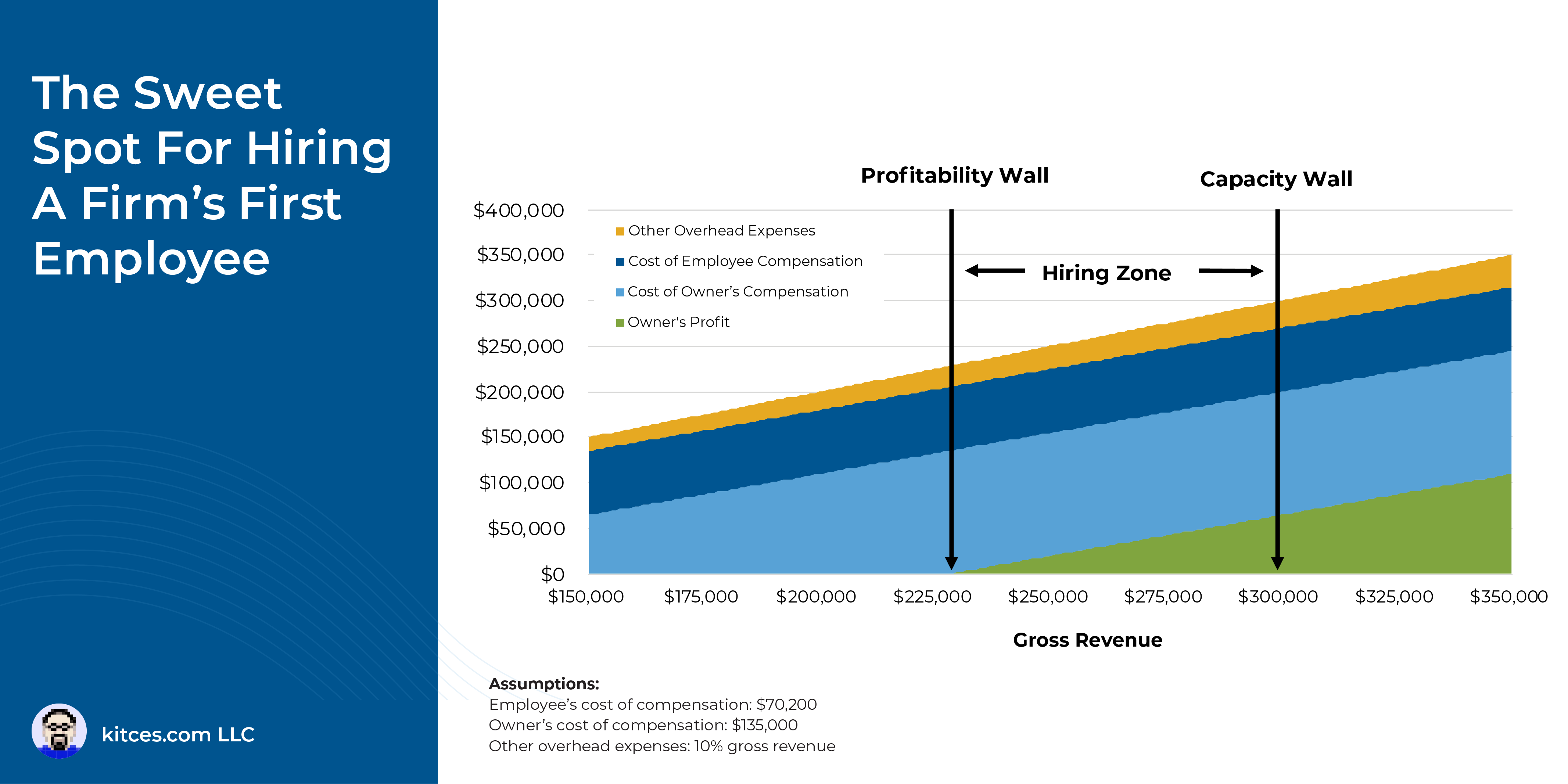Many financial advisors who launch solo advisory firms do so with the intention of adding more employees once the firm becomes big enough to support them. And while conceptually it makes sense that the firm will be ready to hire its first employee at some point, in practice, there often isn’t a lot of clarity about the right time to actually make an initial hire.
In this post, Kitces Senior Financial Planning Nerd Ben Henry-Moreland offers a framework that solo advisory firm owners can use to decide when their firm will be ready to make an initial hire, based on data from Kitces Research on Advisor Productivity and Advisor Wellbeing as well as industry benchmarking studies on advisor capacity.
There are 2 points in a firm’s growth journey that can help solo advisors decide when to make their first hire. One is the advisor’s ‘capacity wall’, which is the point where the advisor has reached their maximum client workload and needs to hire support in order to grow the firm further. Industry benchmarking data suggests that many advisors reach this wall somewhere between 30–40 clients, or $220,000–$320,000 in revenue. And while advisors will sometimes use their capacity wall as a guideline for when to hire, waiting until the advisor is near (or already at) their capacity – and therefore has limited time outside of their existing duties of serving clients and running the firm – to go through the process of searching for, hiring, and onboarding a new employee – can make hiring pretty painful, at least in the short term.
So on one hand, it usually makes more sense for solo advisors to hire well before they reach their capacity, but on the other hand, hiring too early (and before the firm has enough revenue to support the expense of a full- or even part-time employee) can cause a financial strain on the firm and the owner/advisor, whose take-home income is directly impacted by the decision to hire. This brings up the other key point in the firm’s growth journey, which is the ‘profitability wall’: the amount of revenue a firm needs to earn to be able to hire an employee while still adequately compensating the owner/advisor. This amount varies based on the firm owner’s goals, but a rough yardstick can be the amount the advisor would earn if they were working as an employee at another firm. Adding this number to the cost of compensating the new employee (including salary plus payroll tax and benefits), plus the firm’s other overhead expenses, gives the firm’s profitability wall and an estimate of the point in the firm’s growth where it can make an initial hire.
Putting these 2 points – the profitability and capacity walls – together gives an estimate of the advisory firm’s ‘hiring zone’, which firm owners can calculate to find the range (in dollars of revenue) where it makes sense to hire a first employee. Furthermore, it can also help firm owners decide whether it even makes sense to hire to begin with, because a firm’s profitability wall that is too close to, or higher than, its capacity wall (meaning that the firm owner ‘needs’ to make a hire before their firm even has the financial ability to do so) can indicate that the firm owner should instead focus on boosting their capacity – either by streamlining their processes or increasing their fees – before focusing on hiring outside help.
The key point, in the end, is that while each firm owner has their own individual roadmap to hiring, they will inevitably need to navigate between the profitability wall and the capacity wall in order to make a smooth transition from a solo firm to one with 1 (or more) employees. And rather than guessing when the right moment to hire will arrive, taking some time to run the numbers in advance can help advisors plan out the hiring process that will work best for them – which should make both the advisor and the new employee happier in the long run!


